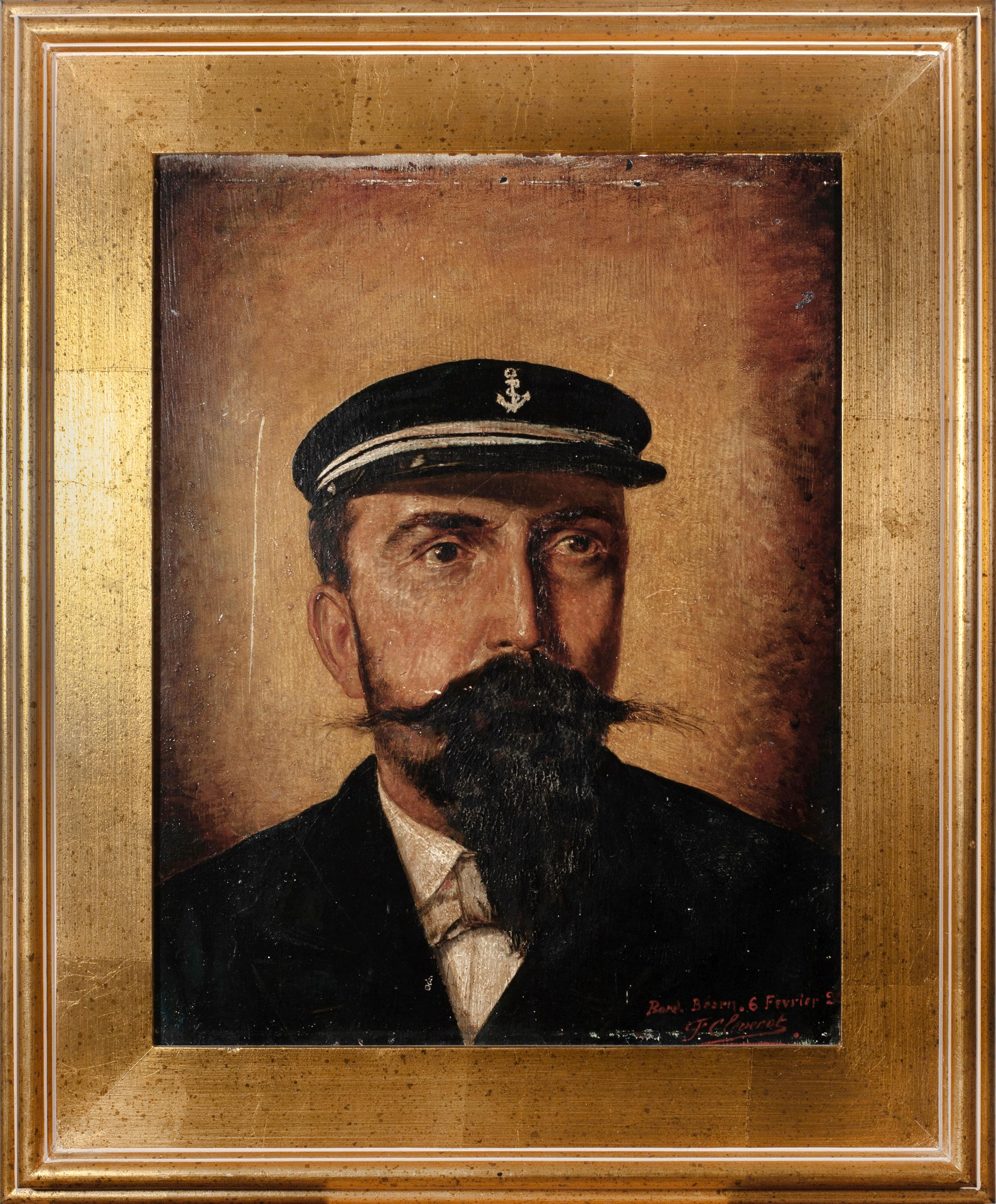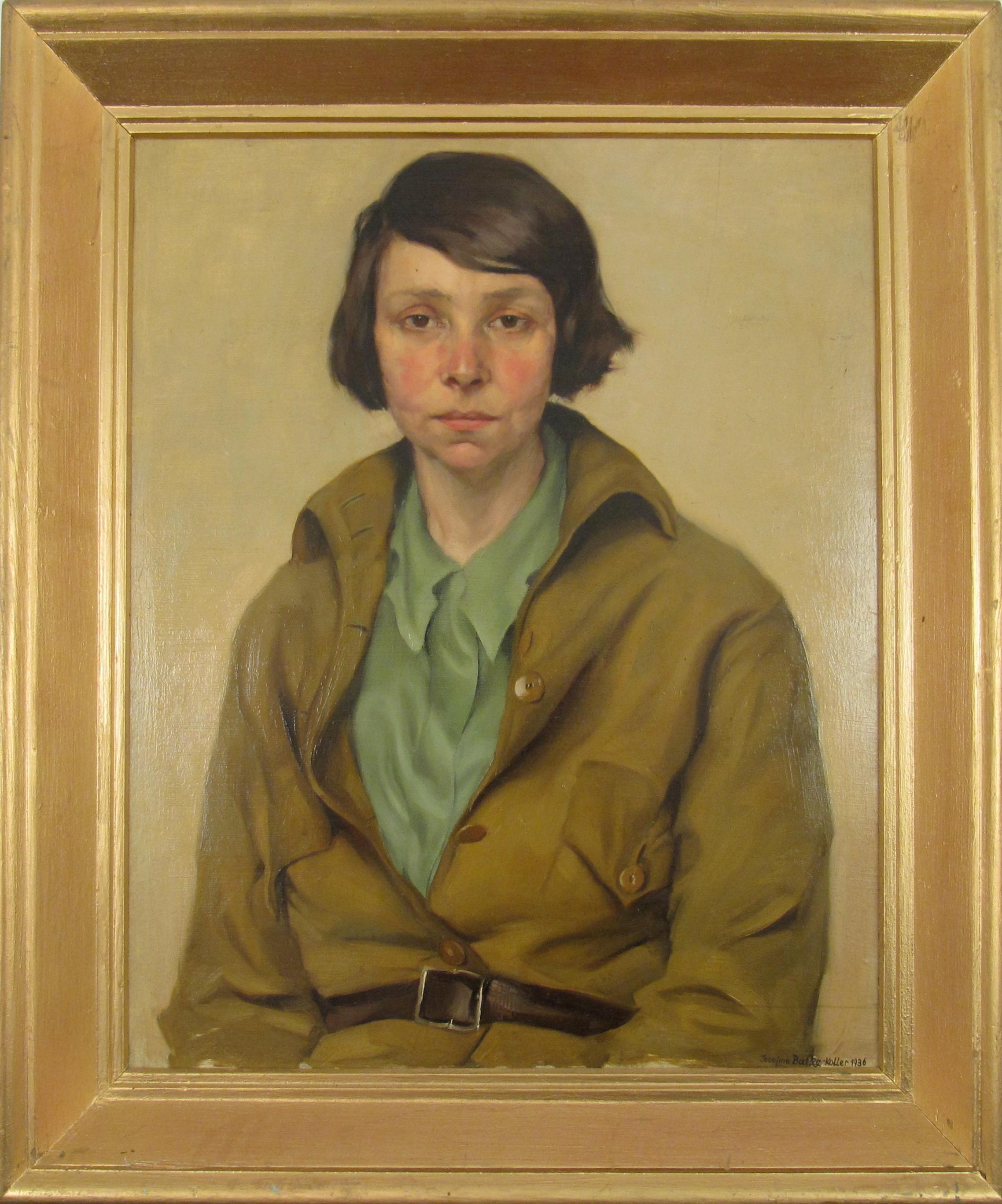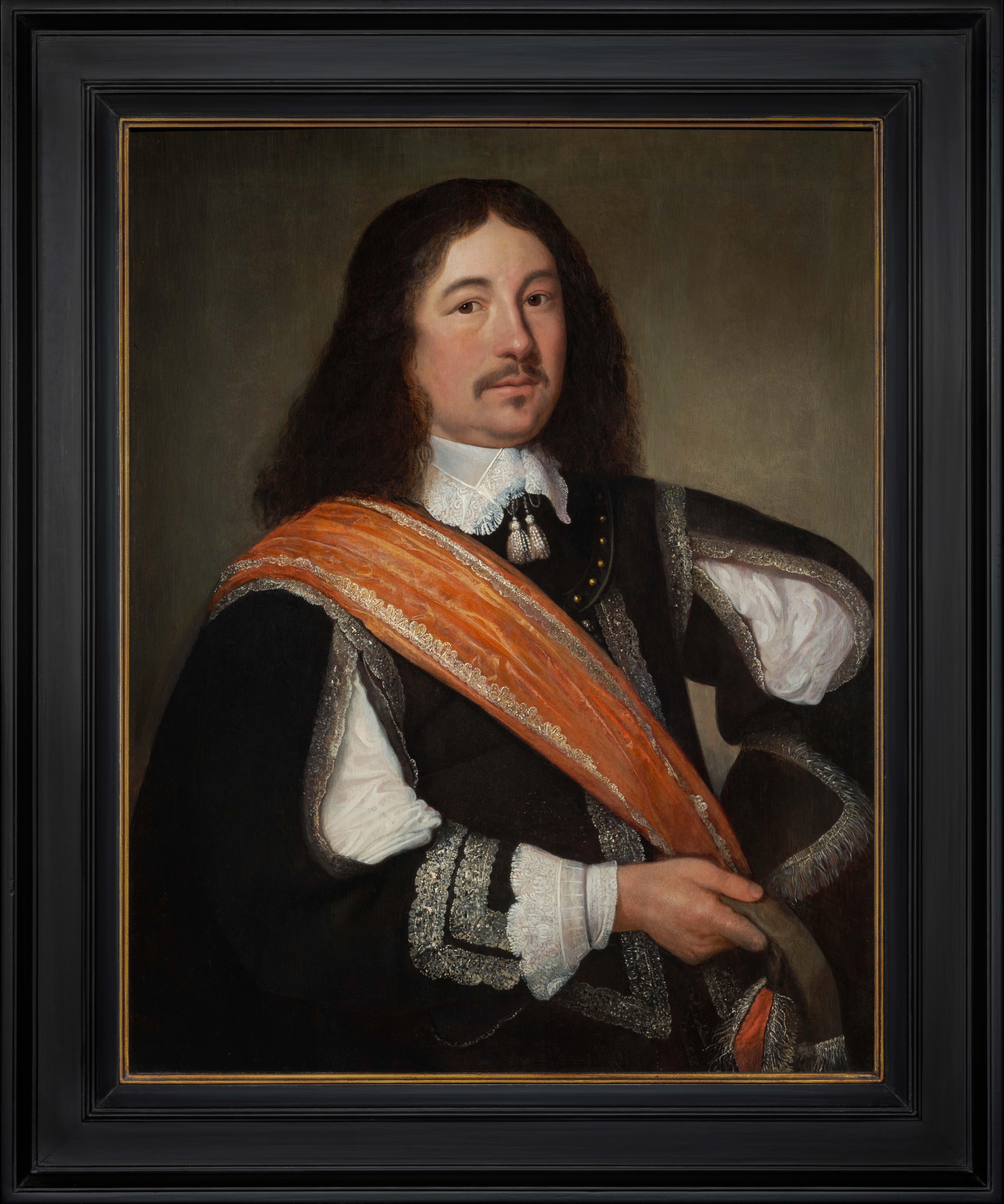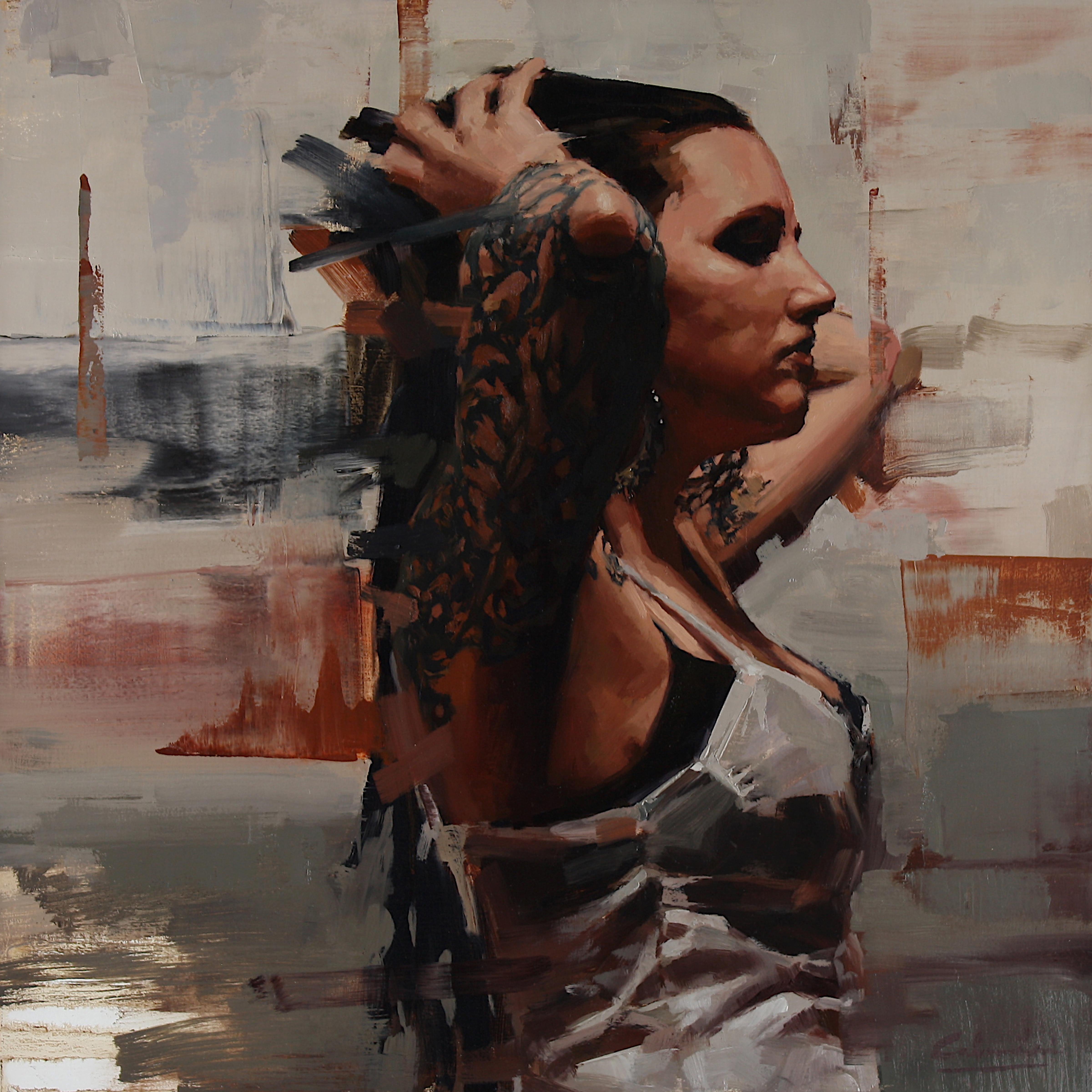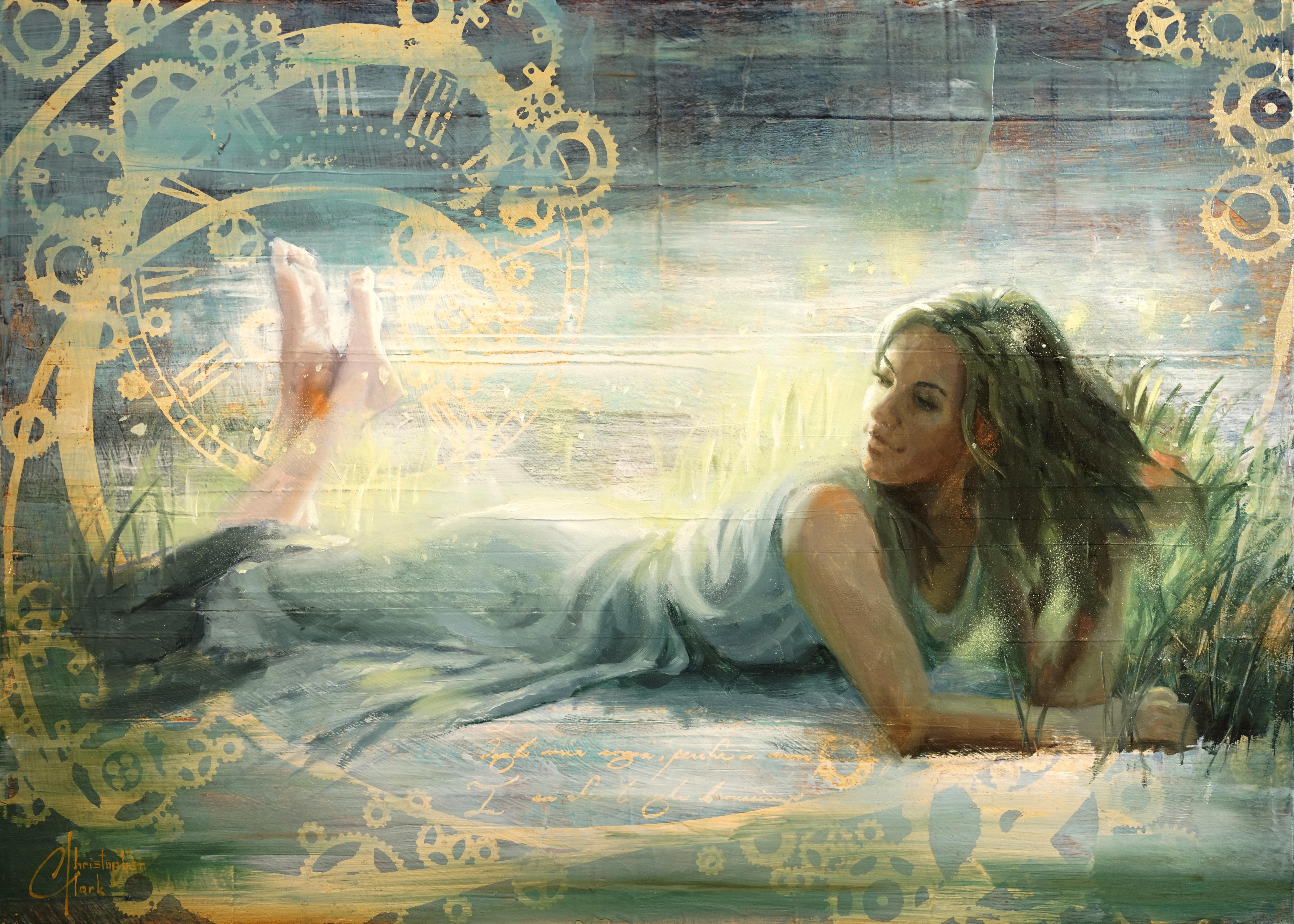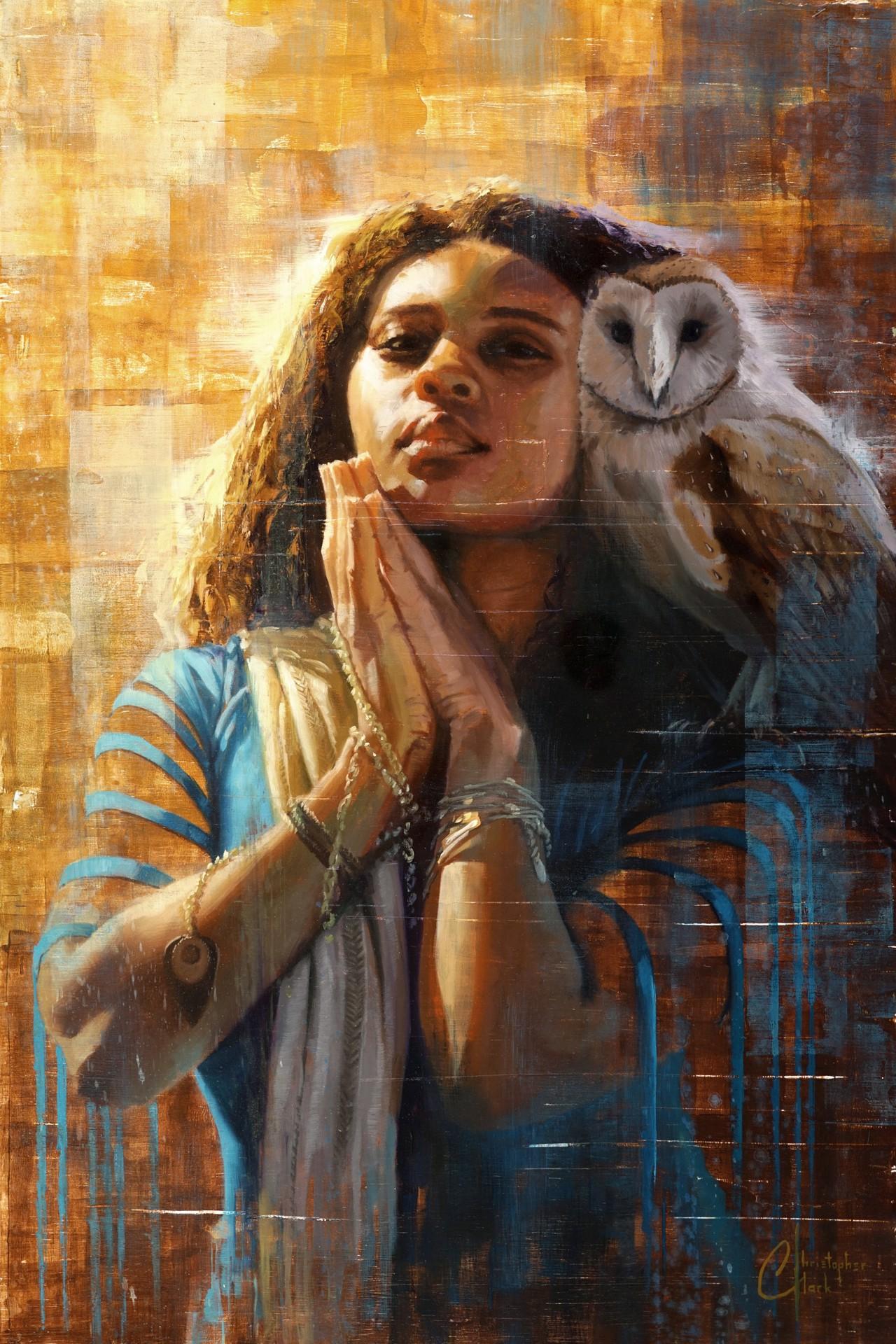Items Similar to King Solomon Worshipping The Idols, 17th Century FRANS FRANCKEN II (1581-1642)
Want more images or videos?
Request additional images or videos from the seller
1 of 11
Frans Francken IIKing Solomon Worshipping The Idols, 17th Century FRANS FRANCKEN II (1581-1642)
About the Item
King Solomon Worshipping The Idols, 17th Century
FRANS FRANCKEN II (1581-1642) - signed sales to $6,000,000
Large 17th Century biblical account of King Solomon worshipping the Idols, oil on panel Frans Francken. Excellent quality and condition Old Testament biblical scene on a cradled panel depicting the Idolatry of Solomon, son and successor of King David. Exceptional detail and would be enhanced with a light clean. Presented in an antique period frame. Signed.
Measurements: 47" x 34" framed approx
Artist Biography
Frans Francken II or the Younger is the third in order of descent in the Francken family tree. Born in 1581, the son of Frans Francken I or the Elder, he was the brother of Thomas, born in 1574, of Hieronymous II, born in 1578 and died in 1623, and of Ambrosius II, the last in line, who died in 1632. Hieronymous II, who died at the age of 56, is only known for his painting Horatius Cocles at Sublicius Bridge. Frans the Younger was initially a pupil of his father, who was then at the height of his career. In his father's studio he imbibed all the teaching of the tradition of Frans Floris. He also spent long periods in Italy, where he familiarised himself in particular with the masters of the Venetian school. Such study in situ enabled him to break away from the well-worn methods of Flemish Italianism, as practised by his father and uncles. It is conceivable that the young artist met Rubens, who was in Italy at the time.
In 1605, at the age of 24, on his return to Antwerp, Frans the Younger became a master in the Antwerp Guild of St Luke. In 1607 he married Elisabeth Placquet in Antwerp. Three sons and eight daughters resulted from this marriage. His children made up the fourth generation in the dynasty. Better known are Frans III (1607-1667) and Hieronymus, born in 1611. The latter had a son, Constantinus (1661-1717), who marks the end of the line. The family of Francken painters runs from 1520 to 1717.
As one of the most active masters in Antwerp, Frans II was appointed dean of the guild in 1614. He was also a member of the Violette, a major literary association, for which he painted an award-winning symbolic coat of arms. He was intimate with the most celebrated artists, in particular van Dyck, who executed a very fine portrait of him, judging by the engraving by Willem Hondius and Pieter de Jode. It is also likely that he was on familiar terms with Rubens who was his near contemporary. He died in Antwerp on 6 May 1642 at the age of 61, outlived by both Rubens and van Dyck.
The first securely dated work of Frans the Younger is Christ on the Cross from the gallery in Vienna, painted in 1606. Witches' Sabbath (Vienna) and The Works of Mercy (Antwerp) are dated 1607 and 1608 respectively. In these two latter works the painter proves himself adept at painting figures and allegorical scenes. The Works of Mercy represents various groups of figures, symbolising the different activities inspired by Christian charity. Paupers and beggars occupy the foreground, the ensemble being dominated by the figure of the glorious Christ.
While Frans the Younger cannot be compared with the masters of this great first generation of Antwerp, which was illuminated and steered by the genius of Rubens, he does nevertheless merit attention. He succeeded in developing and bringing into fashion an anecdotal genre on a more modest scale, elements of which were to inform the last representatives of the Francken family for over a century. Frans the Younger was undoubtedly the most talented draughtsman in the family. While his art may be criticised for its lack of grandeur and solemnity, the execution shows great talent. His brush stroke was vigorous and his imagination, albeit restrained, was brilliant. His interest in tonal values was highlighted by his study and appreciation of his remarkable contemporaries. This enabled him to carry out landscapes and also fleshy figures, which made him altogether worthy of the brilliant period to which he belonged. While detail certainly preoccupied him, he treated it with intelligence and even esprit, as witnessed in The Parable of the Prodigal Son and A Prince's Visit to the Treasury of a Church(both in the Louvre). The scenes painted in grisaille, which surround the principal motif of the Prodigal Son, are characteristic of his style. He excelled in painting jewellery, ornaments, and textiles with shot silk effects. A large number of his figures inhabit the neutral backgrounds of the interiors of apartments and galleries. He carried out such work not only under his own auspices, but also for other artists, such as Peeter Neeffs, van Bassen, Josse de Momper, and Breughel.
Museum and Gallery Holdings
Aix: Arrival of the Hebrews in the Promised Land
Amiens: Adoration of the Magi (sketch)
Amsterdam: Abdication of Charles V of Spain; Adoration of the Magi; The Prodigal Son; Same Subject; Scenes from the Old Testament
Antwerp: A Collector's Cabinet; Miracles at the Tomb of St Bruno; The Works of Mercy; The Four Crowned Martyrs Condemned; Flagellation of the Four Crowned Martyrs; Stoning; The Four Crowned Martyrs at Work
Arras: The Passion
Augsburg: Moses Striking Water from the Rock
Bamberg: The Festival of Dancing
Besançon: The Crossing of the Red Sea; Crossing the Jordan; Christ Delivered to the Insults of the Jews; Christ Carrying the Cross
Bordeaux: Christ at Calvary; Same Subject
Brussels: Croesus Showing Solon his Treasures
Budapest: Esther and Ahasuerus
Caen: The Slaves of the Furies of Love
Chambéry (MBA): Adoration of the Magi
Cherbourg: The Woman Taken in Adultery
Cologne: Adoration of the Magi
Compiègne: Allegory
Dresden: The Calumny of Apelles; The Flight into Egypt; The Queen of the Heavens Crowned with Flowers; The Adultress before Christ; The Creation of Eve
Dunkirk: The Feast of Herod
Florence (Palazzo Pitti): Christ Led to Calvary
Florence (Uffizi): The Flight into Egypt
Hamburg: Drowning of Pharoah's Army
Hanover: The Prodigal Son
Kassel: The Kiss of Judas (copper)
Kassel (Gemäldegal. Alte Meister): Apelles and the Cobbler (copper)
Lille: Christ on the Way to Calvary
Mainz: David, Conqueror of Goliath
Munich: room decorated with pictures and objets d'art; The Seven Works of Mercy; A Tournament
Nancy: The Virgin and Child Served by Angels; Christ in the Desert Served by the Angels
Nantes (MBA): The Embarkation of Cleopatra; The Death of Adonis
Nice: Christ in the Garden of Gethsemane
Oberschleissheim: The Temptation of St Anthony
Oldenburg (Augusteum): Apollo and the Muses
Orléans: Christ before Caiaphus
Oslo: Gathering of Men and Women in front of an Inn
Paris (Louvre): The Parable of the Prodigal Son; The Passion; Ulysses Recognises Achilles amongst the Daughters of Lycomedes; Croesus and Solon
Paris (Mus. Marmottan-Monet): Christ Preaching on the Sea of Tiberias
Rennes: Christ in the House of Simon the Pharisee
Rohrau (Schlossmuseum, Graf Harrach'sche Familiensammlung): Studio (allegorical subject)
Rome (Mus. e Gal. Borghese): Picture Dealer
St Petersburg (Hermitage): Crossing the Red Sea; The Seven Acts of Christian Mercy; Entry of David into Jerusalem
Stockholm: six paintings
Stuttgart: Adoration of the Magi; Last Judgement; The Four Elements; Jupiter and Juno
The Hague: A Ball at the Court of Albert and Isabelle
Tours: The Abduction of Helen
Vienna: Witches' Sabbath; Croesus and Solon; The Dance; The Crucifixion; Christ and Nicodemus; A Cabinet of Art and Curiosities (1636); Gathering of Witches
Bibliography
Härting, Ursula Alice: Studien zur Kabinettbildmalerei des Frans Francken II, 1581-1642. Ein Repräsentativer Werkkatalog, G. Olms, Hildesheim, 1983.
Härting, Ursula Alice: Frans Francken der Jüngere (1581-1642): die Gemälde mit Kritischen Oeuvrekatalog, catalogue raisonné, Luca Verlag, Freren, 1989 (with a summary in English).
- Creator:Frans Francken II (1581 - 1642, Flemish)
- Dimensions:Height: 34 in (86.36 cm)Diameter: 47 in (119.38 cm)
- Medium:
- Period:
- Condition:
- Gallery Location:Blackwater, GB
- Reference Number:
About the Seller
4.8
Platinum Seller
These expertly vetted sellers are 1stDibs' most experienced sellers and are rated highest by our customers.
Established in 2008
1stDibs seller since 2021
201 sales on 1stDibs
Typical response time: 1 hour
- ShippingRetrieving quote...Ships From: Blackwater, United Kingdom
- Return PolicyA return for this item may be initiated within 14 days of delivery.
More From This SellerView All
- Portrait Of King Edward VI (1537-1553) as Prince Of Wales, 16th CenturyLocated in Blackwater, GBPortrait Of King Edward VI (1537-1553) as Prince Of Wales, 16th Century English School - Oil on panel - circa 1547 Large 16th Century portrait of Edward VI as Prince Of Wales, oil...Category
16th Century Portrait Paintings
MaterialsWood Panel, Oil
- Portrait Of Elizabeth Percy, Countess of Northumberland (1646-1690) 17th CenturyBy Daniel MytensLocated in Blackwater, GBPortrait Of Elizabeth Percy, Countess of Northumberland (1646-1690), 17th Century Studio of Jan MYTENS (1640-1670) Large 17th portrait of Elizabeth Percy Countess of Northumberlan...Category
17th Century Portrait Paintings
MaterialsWood Panel, Oil
- Coronation Portrait Of King Edward VI (1537-1553) as King Of England & IrelandLocated in Blackwater, GBCoronation Portrait Of King Edward VI (1537-1553) as King Of England & Ireland, 16th Century English School - Oil on panel - circa 1547 Large 16th Century Coronation portrait of E...Category
16th Century Portrait Paintings
MaterialsWood Panel, Oil
- Court Portrait Of Robert Dudley, 1st Earl Of Leicester (1532-1588) ElizabethanLocated in Blackwater, GBCourt Portrait Of Robert Dudley, 1st Earl Of Leicester (1532-1588) English School Oil On Panel Large antique portrait of Robert Dudley, 1st ea...Category
18th Century Portrait Paintings
MaterialsOil, Wood Panel
- Portrait of Henry IV, King of England (1367-1413), 16th CenturyLocated in Blackwater, GBPortrait of Henry IV, King of England (1367-1413), 16th Century English School Portrait - Early Oil On Panel Large 16th Century court portrait of Henry IV, King Of England (1367-14...Category
16th Century Portrait Paintings
MaterialsOil, Wood Panel
- The Hunting Party, Scottish Moors, 19th Century by ROBERT CLEMINSON (1844-1902Located in Blackwater, GBThe Hunting Party, Scottish Moors, 19th Century by ROBERT CLEMINSON (1844-1902) similar to $15,000 Large 19th century Scottish Moors Hunting Party, oil on canvas by Robert Clemins...Category
19th Century Portrait Paintings
MaterialsOil, Wood Panel
You May Also Like
- CaptainLocated in Columbia, MOF. CLEVEROT Captain 1898 Oil on panel 18 x 14 inches Framed: 28 x 24 inches Hand signed lower right rectoCategory
19th Century Naturalistic Portrait Paintings
MaterialsOil, Wood Panel
- Josefine Batke - Koller (Austrian, 1897-1976) Jewish Brigadist Oil Painting 1936By Josefine Batke-KollerLocated in Meinisberg, CHJosefine Batke - Koller (Austrian, 1897-1976) Portrait of a Young, Jewish Communist Brigadist from the Spanish Civil War • Oil on panel ca. 60 x 49 cm • Frame ca. 75 x 62 cm • Sign...Category
1930s Naturalistic Portrait Paintings
MaterialsOil, Wood Panel
- Portrait Gentleman Black Coat Orange Sash, Dutch Old Master, Oil on Panel c.1650By Bartholomeus van der HelstLocated in London, GBThis exquisite portrait of a gentleman depicted in a sumptuous black coat edged with silver and slashed sleeves is an excellent example of the type of portrait fashionable in England and the Low Countries during the 17th century. The confident pose, striking orange sash - the colour of the house of Orange Nassau - and the leather gorget imbue the sitter with a sense of masculinity and power. The profusely decorated costume is of the highest quality and de rigueur of an elite class - the artist has carefully cultivated this portrait to emphasise the sitter’s wealth and standing in the society that he belonged to. The casual pose, with one arm resting on a hip, is much less formal than earlier decades, and it speaks of ‘sprezzatura’ – one’s appearance should not appear laborious, but instead, effortless. The oil on cradled panel portrait can be dated to circa 1650 based on the hairstyle and the attire - small falling collar, short doublet (doublets reduced in size to just below the ribcage in the late 1650’s), and the type of slashed sleeves with the sleeve seams left open to reveal the white fabric. The demand for portraits in the Netherlands was great in the 17th century. Bartholemeus van der Helst was considered to be one of the leading portrait painters of the Dutch Golden Age surpassing even Rembrandt as the most sought-after portraitist in Harlaam. The Dutch Golden Age, roughly spanning the 17th century, was a period when Dutch trade, science, military, and art were among the most acclaimed in the world. Dutch explorers charted new territory and settled abroad. Trade by the Dutch East-India Company thrived, and war heroes from the naval battles were decorated and became national heroes. During this time, The Dutch Old Masters began to prevail in the art world, creating a depth of realistic portraits of people and life in the area that has hardly been surpassed. The Golden Age painters depicted the scenes that their discerning new middle-class patrons wanted to see. This new wealth from merchant activities and exploration combined with a lack of church patronage, shifted art subjects away from biblical genres. Still life’s of items of everyday objects, landscapes, and seascapes reflecting the naval and trade power that the Republic enjoyed were popular. The new wealthy class were keen to have their portraits commissioned and many artists worked in this lucrative field. Such was the popularity of art that everyone had a painting, even the humble butcher, and hundreds of thousands of paintings were produced. By tradition the sitter is Maarten Tromp (1598-1653) who was an Admiral in the Dutch Navy (the reverse of the portrait contains an old handwritten inscription “van Tromp”). Certainly, the distinctive orange sash is similar to those worn by officers of the Dutch army in the Netherlands who served under the Princes of Orange and the House of Nassau. However, it should be noted that the physiognomy differs from other images of Tromp. Tromp was the oldest son of Harpert Maertensz, a naval officer and captain. He joined the Dutch navy as a lieutenant in July 1622 and was later promoted from captain to Lieutenant-Admiral of Holland and West Frisia in 1637. In 1639, during the Dutch struggle for independence from Spain, Tromp defeated a large Spanish fleet bound for Flanders at the Battle of the Downs, which marked an enormous change - the end of Spanish naval power. He was killed in action during the First Anglo-Dutch War in 1653 where he commanded the Dutch fleet in the battle of Scheveningen. Gloves were an absolutely vital accessory and the elaborate pair in this portrait are embellished with threads of silk and precious metals and salmon-coloured lining. He wears only one glove and holds the other, providing an opportunity to better display the cuffs and detail on his right wrist and forearm. The gloves are probably made from the most prized leather which came from Spain, in particular from Cordova. Cordovan leather was tanned with a special vegetal process that left it both highly impermeable and divinely soft. King Charles I, posed in a rather relaxed manner for Daniel Mytens’s portrait in 1631, is wearing gloves and boots in matching Cordovan leather. The hide is thick, but you can see just how supple it is from the way the gauntlet dimples and the long boot legs fold over themselves, rippling and wrinkling at the ankles. Apart from keeping hands warm the use of gloves during the 15th through the 19th centuries were full of symbolism and they were worn regardless of the season. They kept the skin unblemished - soft, smooth hands were considered highly attractive. This combination of necessity and proximity to bare skin made gloves a deeply personal gift and they took on a strong symbolic significance and were regarded as emblematic of fidelity and loyalty for hundreds of years. Such was the importance of their symbolism was that some gloves were never intended to be worn at all. Their luxury made them ideal gifts at court, and so in the 15th and 16th centuries, ambassadors often presented them as symbols of loyalty. Until the mid-19th century, it was customary to give gloves as tokens to guests at weddings and to mourners at funerals. Gentleman often gifted their bride-to-be with a pair of gloves (the obligatory gift) and were handed over at the betrothal and put on display before the wedding took place. It was probably their direct contact with the skin that led to the eroticism of gloves. Not only were pairs often exchanged between lovers, but from the 16th to the 18th centuries, it was common practice to remove one glove and give it as a gift to a favourite. The idea of the item being presented still warm from the wearer’s hand is certainly suggestive. Following the death of King George IV, his executors purportedly found over a thousand mismatched ladies’ gloves among his possessions. The sentiment of a 17th-century poem reveals the popularity of the practice: “Come to our wedding to requite your loves / Shew us your hands and we’ll fit you with gloves.” Such generosity might be pricey for the hosts, but gloves of varying quality could be offered depending on the status of the recipient. Pairs made with the finest Spanish leather might be reserved for immediate family, while coarse sheep’s leather could be distributed among the servants and tradesmen. The apportioning of quality according to class provided a very clear message of the gloves’ intended use. For refined guests, they were decoration; for the lower classes, they were functional. Bartholomeus van der Helst...Category
17th Century Old Masters Portrait Paintings
MaterialsOil, Wood Panel
- "Outside the Box" Oil PaintingBy Calvin LaiLocated in Denver, COCalvin Lai's (US based) "Outside the Box" is an original, handmade oil painting that depicts a woman in profile holding up her dark brown hair and revealing her heavily tattooed arms...Category
2010s American Impressionist Portrait Paintings
MaterialsOil, Wood Panel
- "Unity", Oil PaintingBy Christopher Clark 1Located in Denver, COChristopher Clark's (US based) "Unity" is an original, handmade oil painting that depicts a woman reclining in a white dress as golden patterning swirls around her form. Bio/artist statement: Christopher has been an artist since early childhood, when he would watch Bob Ross on PBS and mimic the famed oil painter’s art with crayons. He considers himself a self-educated artist, with his studies ranging from personal training with contemporary masters, to classical academic art technique, with much inspiration from 19th Century art and the Impressionist Movement. Christopher lived in Italy for a time, immersing himself in Italian culture and art, which continues to influence his painting. His fan base has grown considerably since his return to the US, gaining the attention of Lucasfilm and Marvel Fine Art, which both signed him as an officially licensed artist in 2016. Other clients include George Lucas, Major League Baseball, Louisville Slugger...Category
2010s American Realist Figurative Paintings
MaterialsOil, Wood Panel
- The Goddess of WisdomBy Christopher Clark 1Located in Denver, COThe Goddess of WisdomCategory
21st Century and Contemporary Figurative Paintings
MaterialsWood Panel, Oil
Recently Viewed
View AllMore Ways To Browse
The Old King
Portrait Jewlery
King David
Antique Portrait Jewelry
Budapest Light
Thomas King
17th Century Copper
Flemish Flower Painting
17th Century Wood Panels
King Albert
17th Century Flower Painting
Dior Fashion Paint
Antique King Crown
17th Century Cross
Rock Festival
Oil Portrait Spanish Woman
Antique 17Th Century Jewelry
Christ Passion
